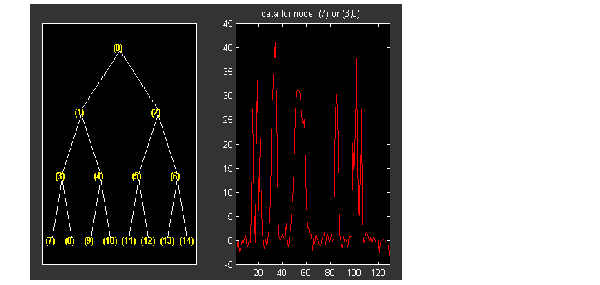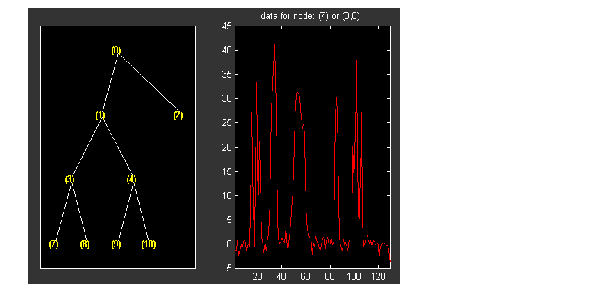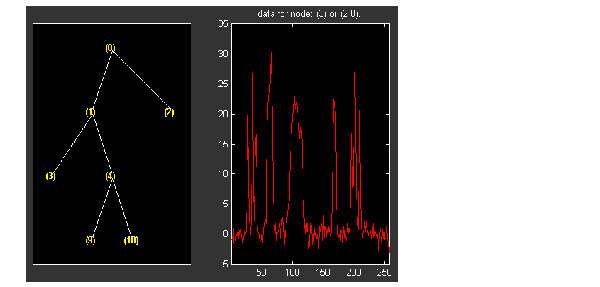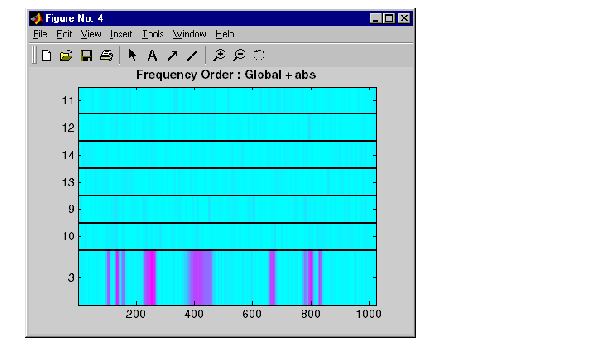load noisbump
x = noisbump;
t = wpdec(x,3,'db2');
fig = plot(t);
% Change Node Label from Depth_position to Index and
% click the node (7). You get the following figure.

% Change Node Action from Visualize to Split-Merge and
% merge the node 2. You get the following figure.

% From the command line, you can get the new tree.
newt = plot(t,'read',fig);
% The first argument of the plot function in the last command
% is dummy. Then the general syntax is:
% newt = plot(DUMMY,'read',fig);
% where DUMMY is any object parented by an NTREE object.
% DUMMY can be any object constructor name, which returns
% an object parented by an NTREE object. For example:
% newt = plot(ntree,'read',fig);
% newt = plot(dtree,'read',fig);
% newt = plot(wptree,'read',fig);
% From the command line you can modify the new tree,
% then plot it.
newt = wpjoin(newt,3);
fig2 = plot(newt);
% Change Node Label from Depth_position to Index and
% click the node (3). You get the following figure.

% Using plot(newt,fig), the plot is done in the figure fig,
% which already contains a tree object.
% You can see the colored wavelet packets coefficients using
% from the command line, the wpviewcf function (type help
% wpviewcf for more information).
wpviewcf(newt,1)
% You get the following plot, which contains the terminal nodes
% colored coefficients.






